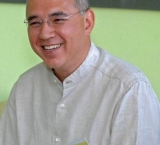Hack:
CHANGING THE LOCKS ON THE C-SUITE DOORS (or CHOOSING LEADERS DIFFERENTLY) - because we're not scared of the future, but we're not reckless either
(this hack is available as a Powerpoint - see materials)
From small charities to global corporations, when it comes to filling − behind closed doors − positions in or near the boardroom, selection ‘best practices’ such as competencies and structured interviews usually receive no more than lip service. Even when implemented, at high organisational altitudes these practices don’t serve us well. They assume that the future can be extrapolated from the past, and they neglect intuition and politics.
The result is we choose leaders badly. We don’t progress because change is blocked by fear, inertia, the self-interest of elites, and too blinkered a reliance on science. Neither does HR’s lack of credibility in dealing with board-level power and politics help.
SHIFT SELECTION PARADIGM. The two existing paradigms that drive how we do selection block adaptability to the future. Senior organisational work always involves science, politics and intuition − so when we select leaders we should think critically about all 3.
ADOPT THE CYNEFIN FRAMEWORK as an easy-to-grasp way to integrate complexity thinking into how we choose leaders. Developed by Dave Snowden and Cognitive Edge and deservedly popular, Cynefin helps anyone talk about the complexity of situations which they are in by distinguishing between simple, complicated, complex and chaotic.
Embed into SUCCESSION PLANNING and STRATEGIC TALENT MANAGEMENT the concept of risk appetite (borrowed from investment).
-------(These points, including an introduction to the CYNEFIN framework, are expanded in the Powerpoint.)------
Thanks for the discussion to Prof Graham Abbey, Terry Hitchcock and Dr Rob Warwick.
For the hack content above plus a couple of slides expansion on each point in the solution see the Powerpoint 'Choosing leaders'. For still more/optional background, see the supplementary note.
For an introduction to the Cynefin framework from Dave Snowden and Cognitive Edge (click the link or cut and paste http://cognitive-edge.com/library/more/video/introduction-to-the-cynefin...)
For the book developing the theory (click the link or cut and paste https://www.ashgate.com/default.aspx?page=641&calcTitle=1&pageSubject=19...)
Douglas nails it in two ways for me. Firstly, instinct in the selection of leaders and in boardroom discussion needs to be put into its proper balance with what Douglas calls science and politics. Gut instinct and gut feel are vital, supressed, parts of sound judgement and good decision making, but when the gut does spill into C-Suite it often does so in entirely the wrong way. Secondly, embracing a completely different take on risk and uncertainty is surely necessary as we experience a complete shift in how work happens. The Cynefin framework is a great place to start, as it changes the view, and makes room for what Douglas calls instinct, alongside science and politics. I write, by the way, after two careers. In the first I led the product R and D for a derivatives exchange. In the second, Ive explored the role of narrative in organisations. I've found in both circumstances, and almost every organisation, that people find it really hard to look at things accurately, which is not the same as looking at what are generally taken to be the facts.
- Log in to post comments




You need to register in order to submit a comment.